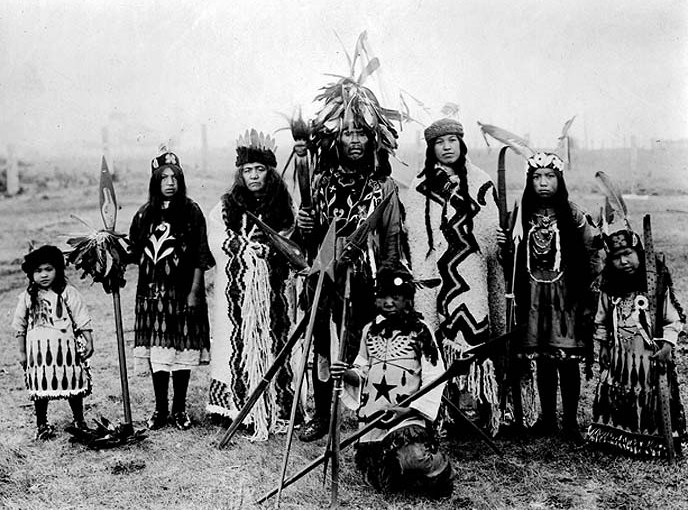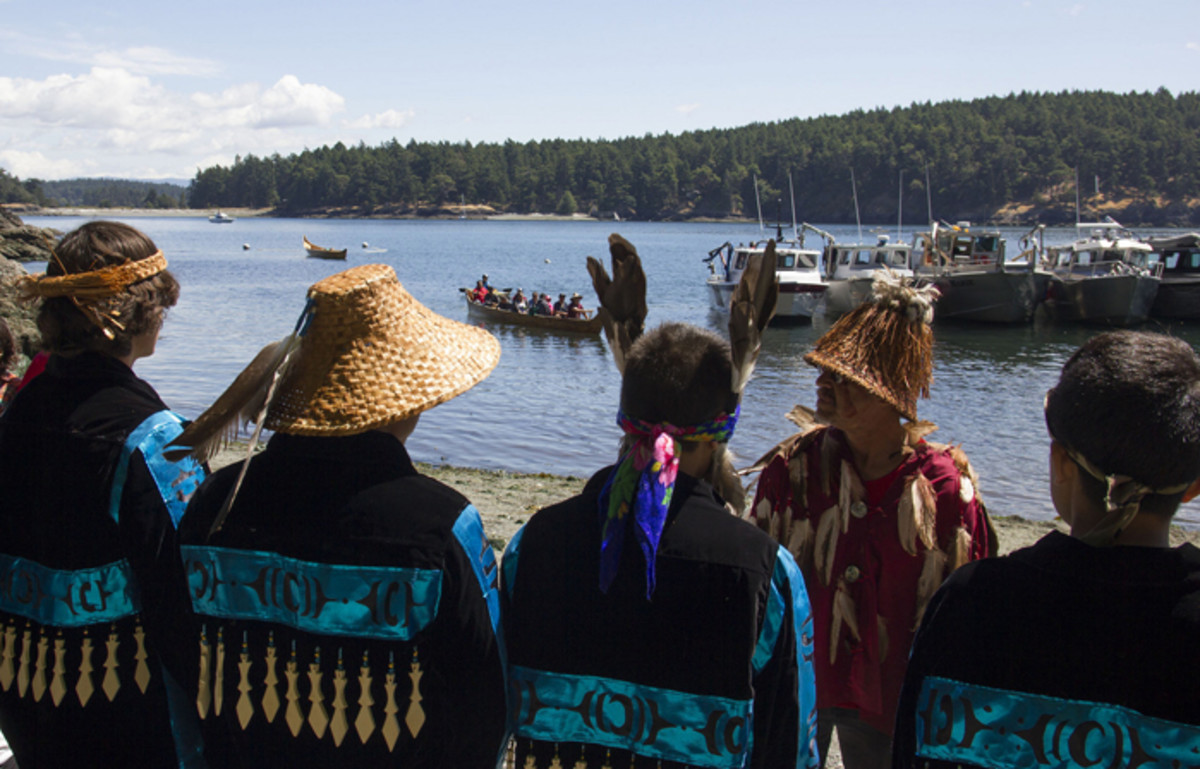The Lummi Nation: Washington State’s Richest Tribe and a Legacy of Resilience
The Lummi Nation: Washington State’s Richest Tribe and a Legacy of Resilience

The state of Washington is home to 29 federally recognized tribes, each with its own rich history, culture, and traditions. However, one tribe stands out for its remarkable economic success: the Lummi Nation. This indigenous group, based in the northwestern corner of Washington state, boasts a substantial portfolio of assets, making it the richest tribe in the state and one of the most prosperous in the United States. But how did the Lummi Nation achieve this economic prominence, and what lessons can be gleaned from their story?
A Legacy of Land and Resources:
Related Articles: The Lummi Nation: Washington State’s Richest Tribe and a Legacy of Resilience
- The Richest Tribe In America: Unpacking The Complexities Of Wealth And Sovereignty
- Oklahoma’s Wealthy Legacy: Top 10 Richest Native American Tribes
- Unveiling The Riches: Exploring The World’s Wealthiest Tribes
- The Richest Native American: A Journey Through Wealth And Legacy
- The Mystery Of Blue Eyes In India: Unraveling The Genetics And History
The Lummi Nation’s journey to economic success began with their deep connection to the land. Their ancestral territory, encompassing the shores of Bellingham Bay and the surrounding islands, provided them with a wealth of natural resources, including salmon, shellfish, timber, and fertile farmland. This connection to the land, nurtured for generations, formed the foundation of their economic well-being.
The Impact of Treaty Rights:
In 1855, the Lummi Nation signed the Treaty of Point Elliott, a significant agreement that recognized their rights to their ancestral lands and resources. This treaty, like others signed with indigenous tribes across the United States, established a framework for co-existence and resource management. While the treaty process was often fraught with complexities and power imbalances, it ultimately provided the Lummi Nation with legal recognition and the potential for self-determination.
From Fishing to Gaming:
Throughout the 20th century, the Lummi Nation continued to rely on traditional fishing and resource management practices for their livelihood. However, the rise of commercial fishing in the region, coupled with environmental changes, posed challenges to their traditional way of life. In the 1980s, the Lummi Nation, like many other tribes across the US, turned to gaming as a means of economic diversification and self-sufficiency.
The construction of the Lummi Nation’s first casino, the "Lummi Nation’s 7 Cedars Casino," in 1995 marked a turning point. This venture proved to be remarkably successful, generating substantial revenue that allowed the tribe to invest in various sectors, including education, healthcare, and economic development.
Beyond Gaming: A Diversified Portfolio:
The Lummi Nation’s economic success story extends far beyond gaming. They have strategically invested in a diverse portfolio of businesses and assets, including:

- Real Estate: The tribe owns and manages significant real estate holdings, including commercial and residential properties, generating income and supporting economic development within their community.
- Timber Resources: The Lummi Nation continues to manage and harvest timber resources on their land, contributing to their economic stability and supporting sustainable forestry practices.
- Energy: The tribe has invested in renewable energy projects, such as wind and solar power, contributing to their energy independence and promoting environmental sustainability.
- Tourism: The Lummi Nation has developed tourism ventures, such as cultural tours and museums, highlighting their rich heritage and attracting visitors to their community.
- Healthcare: The tribe operates a state-of-the-art healthcare facility, providing quality medical services to their members and the surrounding community.
- Education: The Lummi Nation invests heavily in education, providing scholarships and supporting a network of schools that foster cultural preservation and academic excellence.

Economic Success and Cultural Preservation:
The Lummi Nation’s economic success is not just about financial prosperity. It is deeply intertwined with their commitment to preserving their culture and traditions. The tribe invests in language revitalization programs, cultural events, and educational initiatives that ensure the continuation of their heritage for future generations.

Lessons from the Lummi Nation:
The Lummi Nation’s story provides valuable insights for other indigenous communities seeking economic self-sufficiency and cultural preservation:
- Embrace Diversification: The tribe’s success is rooted in its diversified portfolio of investments, which mitigates risk and provides stability in a changing economic landscape.
- Invest in Education and Healthcare: The tribe recognizes the importance of education and healthcare in empowering their community and ensuring its long-term well-being.
- Preserve Cultural Heritage: The Lummi Nation’s economic success is inextricably linked to its commitment to preserving its culture and traditions, ensuring that its heritage thrives for future generations.
- Embrace Partnerships: The tribe actively collaborates with other organizations and businesses, fostering partnerships that promote economic growth and community development.
The Future of the Lummi Nation:
The Lummi Nation continues to evolve and adapt to the challenges and opportunities of the 21st century. The tribe remains committed to its mission of economic self-sufficiency, cultural preservation, and environmental stewardship. Their story serves as an inspiration to indigenous communities across the globe, demonstrating the power of resilience, resourcefulness, and a deep connection to one’s heritage.
FAQ about the Richest Tribe in Washington State:
Q: How did the Lummi Nation become the richest tribe in Washington state?
A: The Lummi Nation’s wealth stems from a combination of factors, including their treaty rights to land and resources, their successful gaming operations, and their strategic investments in diverse sectors like real estate, timber, and energy.
Q: What are some of the Lummi Nation’s key economic ventures?
A: The Lummi Nation’s economic ventures include the 7 Cedars Casino, real estate holdings, timber resources, renewable energy projects, tourism ventures, a healthcare facility, and educational programs.
Q: How does the Lummi Nation balance economic success with cultural preservation?
A: The Lummi Nation prioritizes cultural preservation alongside economic development. They invest in language revitalization programs, cultural events, and educational initiatives to ensure the continuation of their heritage for future generations.
Q: What lessons can other indigenous communities learn from the Lummi Nation’s story?
A: The Lummi Nation’s story highlights the importance of diversification, investment in education and healthcare, cultural preservation, and collaborative partnerships in achieving economic self-sufficiency and community development.
Q: What are the Lummi Nation’s future plans for economic growth and cultural preservation?
A: The Lummi Nation continues to pursue economic opportunities while remaining committed to preserving their culture and traditions. They are actively involved in various initiatives, including environmental stewardship and community development projects, ensuring a sustainable future for their community.

Closure
Thus, we hope this article has provided valuable insights into The Lummi Nation: Washington State’s Richest Tribe and a Legacy of Resilience. We hope you find this article informative and beneficial. See you in our next article!


